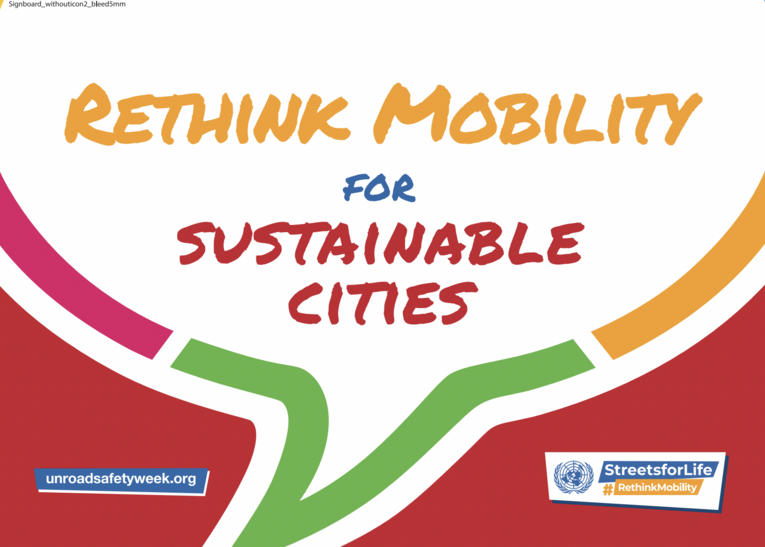The 7th United Nations Global Road Safety Week (UNGRSW) will be held from the 15th to the 21st of May this year. The theme #RethinkMobility calls on policymakers and decision-makers to make walking, cycling, and public transport safe and convenient, especially for vulnerable road users like youth, so that cities can shift to more active and sustainable modes of mobility. Use these resources to show your support.
Key Messages
This year’s UNGRSW wants to highlight the desperate need for governments and their partners to rethink mobility, to shift from car-centric cities to people-centric ones. The theme maintains that safety must be at the core of efforts to reimagine how we move in the world, focusing on the need for active and sustainable mobility.
Another key message saw the importance of safe road infrastructure, stating that road networks must be designed with vulnerable road users and the most at risk in mind – this means creating roads and streets that cater to the needs of young people, children, women, people with disabilities, and the elderly.
The theme, #RethinkMobility, emphasizes that safe walking and cycling can contribute can make people healthier, cities more sustainable, and societies more equitable. It also holds that safe, affordable, accessible, and sustainable public transport is a solution for the many ills that society has.

What can you do to get involved?
The Global Alliance of NGOs for Road Safety shared a few activities you can do to support the 7th UNGRSW. We published them here;
- Car-free days – Make a few key streets where people and vehicles usually mix (such as shopping streets), car-free for a day. Rather than just encouraging people to walk and cycle, car-free days create conditions where they can walk and cycle freely. Remember to get the necessary permissions well in advance and advertise your car-free day widely. (Involved: local authorities, NGOs, communities, media)
- Decision makers “walking the talk” – Hold a media event or roundtable on public transport or with a decision maker or other public figure walking or cycling to show that it is a desirable way to travel. Decision makers (or influencers and celebrities) have a powerful influence on people’s perceptions. In many countries, people are not used to powerful people walking, cycling, and taking public transport. (Involved: decision makers/influencers/celebrities, journalists, NGOs)
- “Show and tell” your decision maker – Walk your decision-maker around the neighborhood. Show them what the problems are and what needs to be done to make your streets safe for walking and cycling. This activity could empower community groups, schools, and other groups to demand safety. It could also incorporate a record your journey element. (Involved: decision-makers, NGOs, community members, and leaders)
- Pop-up infrastructurePromote bicycle lanes or other active mobility infrastructure by selecting a street and implementing temporary pop-up infrastructure, making sure to get permission from the organizations or the agencies involved. (Involved: Local authorities, NGOs, community groups)
Find out what more you can do by going to the Alliance’s website.

